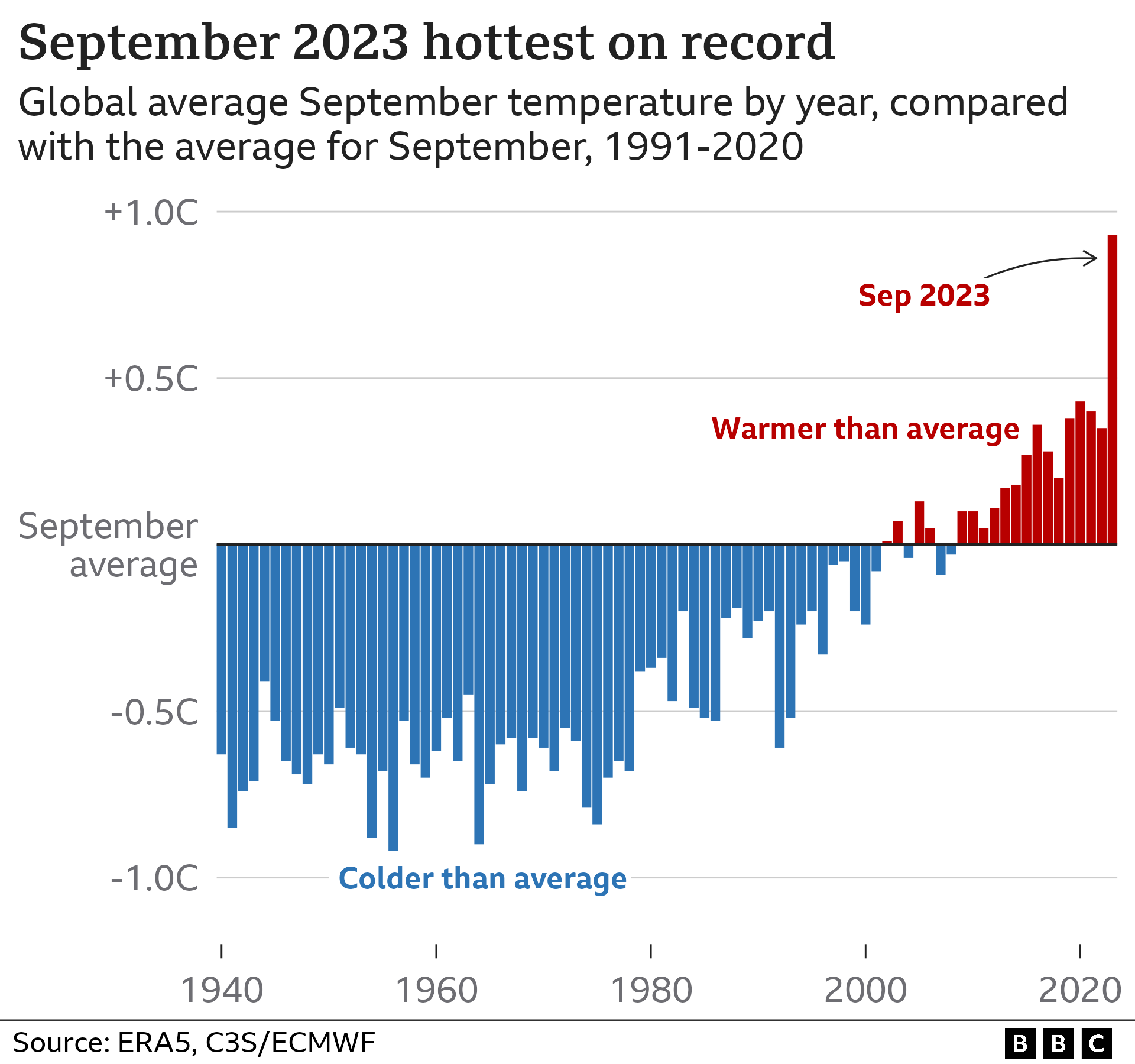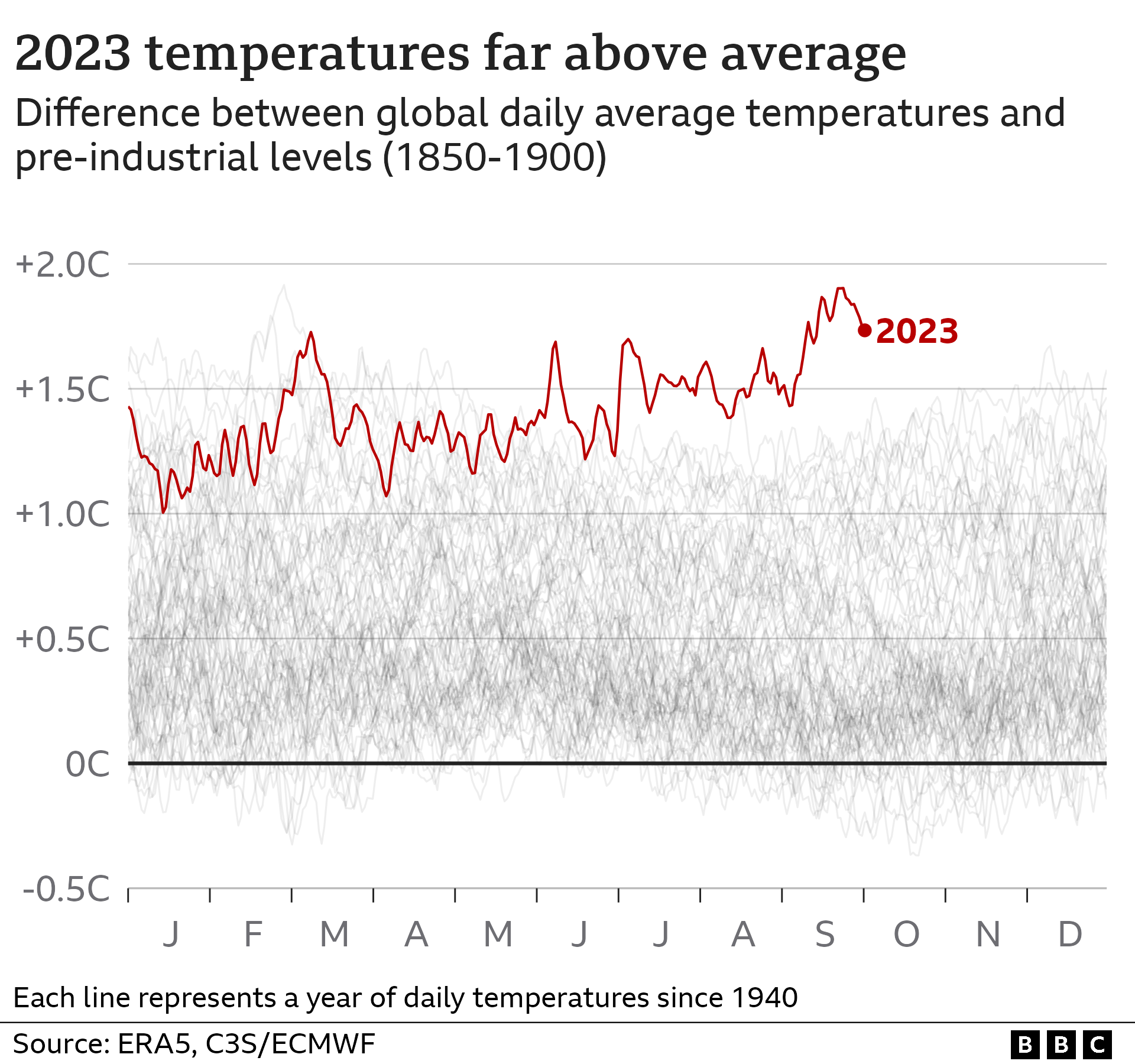Warmest September on record as ‘gobsmacking’ data shocks scientists

The world’s September temperatures were the warmest on record, breaking the previous high by a huge margin, according to the EU climate service.
Last month was 0.93C warmer than the average September temperature between 1991-2020, and 0.5C hotter than the previous record set in 2020.
Ongoing emissions of warming gases in addition to the El Niño weather event are driving the heat, experts believe.
Some scientists said they were shocked by the scale of the increase.
They say 2023 is now “on track” to be the warmest on record.
September’s high mark comes in the wake of the hottest summer on record in the northern hemisphere as soaring temperatures show no signs of relenting.
The data, from the Copernicus Climate Change Service, shows that the month had the biggest jump from the long term average in records dating back to 1940.
Scientists have been quite shocked by some of the detail in the data.
“This month was, in my professional opinion as a climate scientist – absolutely gobsmackingly bananas,” Zeke Hausfather, an experienced researcher, wrote on X formerly known as Twitter.

Beating a long term recent average by almost a degree is bad enough, but this masks even greater differences in some parts of the globe. In Europe, for example, the scale of heating was remarkable, beating the long term average by 2.51C.
“The unprecedented temperatures for the time of year observed in September – following a record summer – have broken records by an extraordinary amount,” said Dr Samantha Burgess, Deputy Director of the Copernicus Climate Change Service (C3S).
One important measure that climate researchers look to is the difference between current temperatures and what they were before the widespread use of fossil fuels.
Last month was around 1.75C above the temperatures during this so-called pre-industrial period – the highest figure for a single month ever recorded.
This will cause a good deal of unease among researchers.
Political leaders meeting in Paris in 2015 agreed to try and hold the rise in global temperatures under 1.5C this century.
September’s figure isn’t a breach of that agreement, because the Paris target refers to decades not months. But it is undoubtedly a worrying direction of travel.
Scientists believe that this year as a whole will stay under that 1.5C limit, but 2023 is “on track” to become the warmest on record, according to Copernicus. The year to the end of September shaded the current warmest year, 2016, by 0.05C as the hottest ever.
Extreme heat has continued into October, smashing monthly high records in many locations including in Spain.

Global temperatures may surge even further above normal as the El Niño weather event is yet to peak.
El Niño forms part of the El Niño Southern Oscillation – the dominant natural mode of global climate variability on Earth on seasonal or year-to-year timescales. During El Niño events, warm water comes to the surface in the East Pacific, releasing additional heat into the atmosphere.
This is one of the reasons for surging global temperatures – when added to the long-term warming caused by humans, mainly from fossil fuel burning releasing planet-warming greenhouse gases.
Experts believe the scale of heating puts new pressure on politicians to act, as they prepare to gather for the COP28 climate summit at the end of November.
“Two months out from COP28, the sense of urgency for ambitious climate action has never been more critical,” Dr Burgess said.











